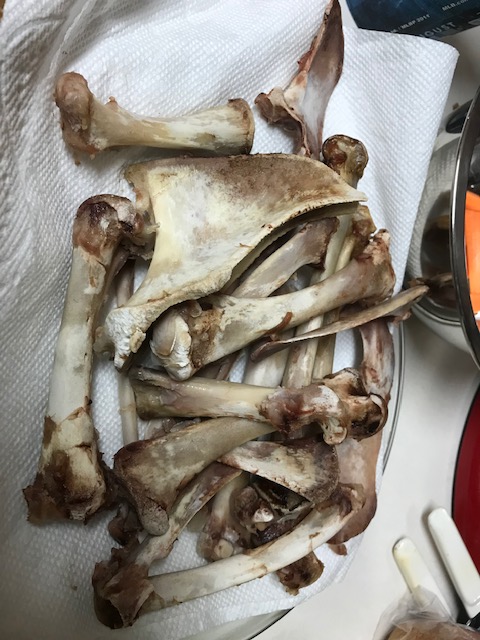Pigment making is something that can be done all year, but access to some of the materials for making pigments can be very seasonal.
Winter
Winter is a good time to make carbon black pigments. The cold temperatures make a fire in a fireplace or fire pit welcome. Many groceries stores carry nuts in the shell around Christmas time. If you wait until after Christmas, you can purchase almonds in the shell at a deep discount. The almond shells make a lovely blue-black when carbonized. To carbonize materials for pigment, put the material in a low oxygen container and put the container into the fire. This process works for almond shells, bone, ivory (mammoth ivory is legal), peach pits, grapevine, or hardwood.
Spring
Spring brings plant based pigments more into focus. This is the time to plant the dye plant seeds you purchased during the winter months. Most plants require that you wait until after the last frost so pay attention to the forecast and the planting expectations for your region. You may also be planting bulbs like saffron crocuses or perennial plants like columbine. Always be careful to avoid invasive plants for your region. These may include woad, weld, and buckthorn (shrub).
Later in the spring you can start to harvest flowers for green pigments. Blue iris petals and columbine petals make a lovely transparent green.
Summer
Summer adds more botanical pigment opportunities. Cornflowers and poppies will be ready for harvest and processing. Sometimes columbine will continue to flower during the summer. Blackberries can be used to create a reddish purple clothlet.
Late summer brings elderberries and buckthorn berries. Buckthorn berries will produce different colors at different times. When unripe, buckthorn berries will produce an orange tinted yellow. When harvested when fully ripe, buckthorn berries create a green pigment sometimes called sap green.
Feel free to experiment with various flowers. Although I have found no documentation for its use as a medieval pigment, I have used dandelion flowers to make a lake pigment. I have made purple pigment with red geranium flowers. Red roses produced a disappointing greenish brown.
You can also take advantage of the pleasant summer temperatures to work outside to do the things that I have learned not to do inside. At this point I am no longer allowed to do the following things inside according to my spouse due to noxious smells produced: make ink with vinegar and make garlic glair for gilding. Although we love the smell of garlic, when squeezing the juice from about 100 cloves of garlic, the vapors in the kitchen made our eyes water and became almost weapon grade. Same with simmering vinegar to make brazilwood or iron gall ink. Wine or beer used to make ink is tolerable inside, but vinegar should really be moved outside on a camp stove.
Messy processes like ink making or processing earth pigments can also be moved outside, but be careful of wind when processing earth pigments as the fine particles often make the most beautiful colors.
Fall
Fall brings botanical harvesting to a close and is the time to prepare for winter. Late summer or early fall are the time to divide irises and mulch perennials in preparation for winter.











